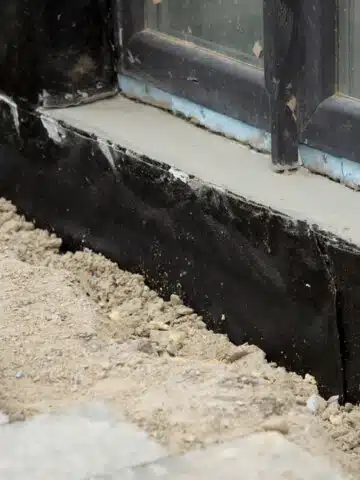Blog, Uncategorized
How To Maintain Waterproof Foundation Walls
The foundation is undoubtedly the bedrock of any structure, providing stability and support. Over the years, more homeowners and businesses have come to realize the importance of maintaining waterproof foundation walls for structural longevity and the health of inhabitants. However, once waterproofed, it’s not a set and forget scenario. Regular maintenance is crucial, and commercial construction services can play a pivotal role in ensuring optimal upkeep.
Routine Inspections are Essential
Maintaining waterproof foundation walls is not a one time task but rather an ongoing commitment to ensure the longevity and integrity of the building. Among the first and most crucial steps in this journey is regular and systematic inspection of the foundation. Just as one would routinely check the roof for leaks or walls for cracks, the foundation demands equal, if not more, attention due to its paramount importance in a structure’s overall health.
The very nature of foundation walls means they remain predominantly out of sight, and consequently, out of mind for many property owners. However, this hidden aspect makes them vulnerable to unnoticed and unaddressed deterioration. Regular visual checks can aid in detecting early signs such as minor foundation cracks, patches where the protective membrane may be wearing thin, or moisture induced discoloration. While its natural for buildings to undergo seasonal expansions and contractions, any drastic or sudden changes in the foundations appearance should ring alarm bells.
However, relying solely on visual inspections may not always be foolproof. There’s a multitude of underlying issues that might not be immediately evident to the untrained eye. Engaging commercial construction services for routine inspections can bridge this gap.
Addressing Drainage Issues Promptly
Water, in its relentless nature, will always find a way unless effectively guided. The area surrounding the foundation plays a pivotal role in maintaining its waterproof integrity. The primary goal is to ensure that water flows away from the building and not towards it. This means that the gradient of the soil should be sloping away, and there should be no depressions where water can accumulate.
Gutters and downspouts from the frontline defense in this regard. They channel roof water away, preventing it from pooling around the foundation. However, they need regular checks and cleaning. A clogged gutter can overflow, defeating its purpose and leading to potential foundation wall troubles.
Another common oversight is the termination point of downspouts. They should ideally direct water several feet away from the foundation. Additionally, landscaping features, like swales, can further assist in guiding water away. In instances where drainage issues persist, commercial construction services can assess the area, provide expert solutions, and ensure that the foundation remains dry and robust.
Sealant Checks and Reapplications
Over time, the sealants used in waterproofing can degrade or lose their efficacy. Its vital to regularly check the condition of these sealants. Depending on the type and the environment, periodic reapplication may be necessary to ensure the foundation remains impervious to water. Consulting with professionals can help determine the right reapplication schedule for your specific conditions.
Monitoring Landscape and Vegetation
Plants beautify our surroundings, but their roots can be a cause for concern. Deep Rooting plants or trees near foundation walls can disrupt the soil and potentially affect the waterproofing layer. Its advisable to keep a vigilant eye on the landscape and ensure that no vegetation poses a threat. If in doubt, seeking advice from commercial construction services can help identify and mitigate potential risks.
Ensuring Sump Pump Functionality
For those with basements or properties in low lying areas, a sump pump is often a vital component of the waterproofing strategy. It works diligently to remove excess water, preventing it from exerting pressure on foundation walls. Regularly checking its functionality, especially before rainy seasons, ensures that it’s ready to tackle any water influx, thereby aiding in maintaining waterproof foundation walls.
Educating Yourself on Foundation Types and Needs
Foundations come in various types, from full basements to crawl spaces or slabs, and each has its unique maintenance requirements. Familiarizing oneself with the specific type of foundation and its needs can guide maintenance practices. Some might require more ventilation, while others might need frequent checks for seepage. Tapping into the expertise of professionals can provide insights tailored to your property’s specifics.
Maintaining waterproof foundation walls is an ongoing commitment, ensuring that the building remains sturdy and free from moisture related damages. While some measures can be undertaken independently, the invaluable expertise offered by commercial construction services cannot be overstated. Their guidance can help navigate the challenges of maintenance, ensuring that the foundation remains dry, resilient, and serves its purpose for years to come.





